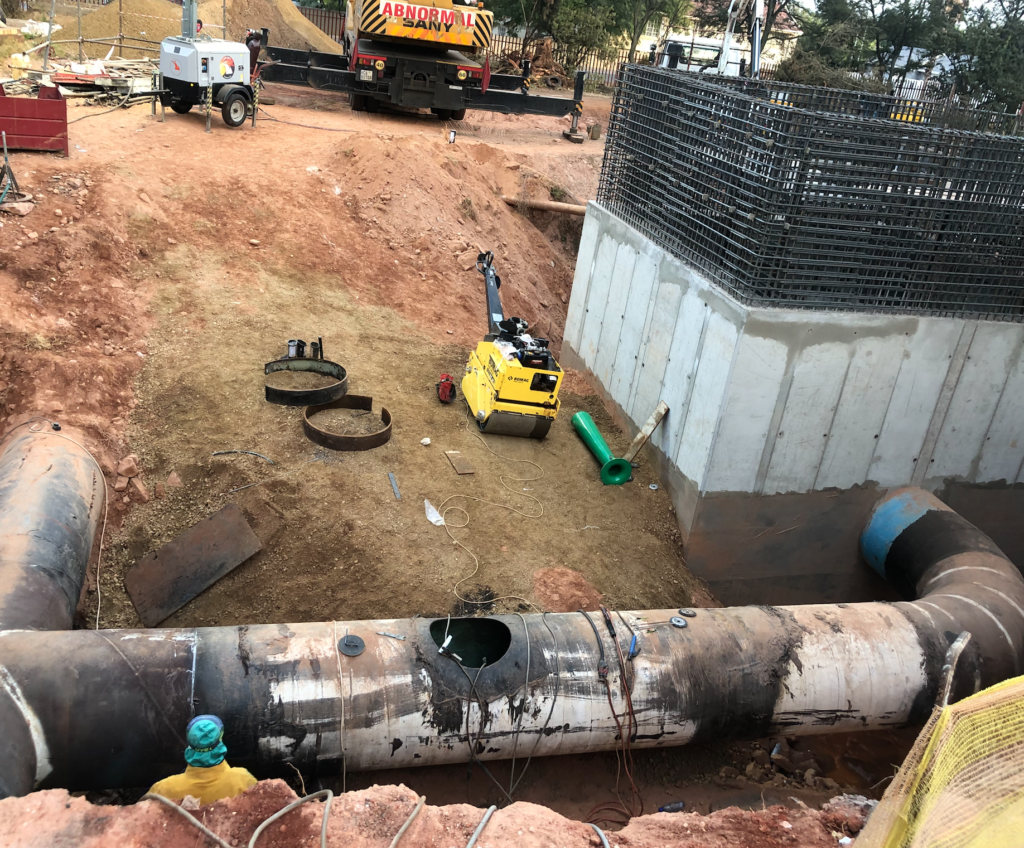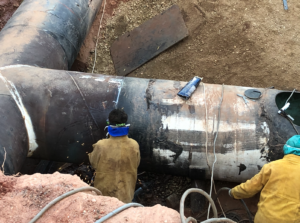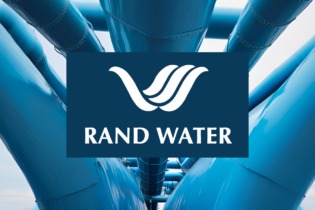Randwater maintenance has kicked off in Johannesburg, Tswane, and Ekuhurleni, this planned maintenance project is a necessary step in both keeping up with demand and planning for the future.
By Duncan Nortier
While the planned maintenance comes with a host of flow reductions, there have also been outside complications that have either exacerbated existing planned reductions or created unplanned maintenance.
Complications
An electrical power failure at Rand Water’s Zwartkopjes Booster Pumping Station occurred on 26 June. This has since been repaired and the pumping station is running at full capacity. In addition, on 25 June, the City of Johannesburg experienced a major burst pipe which affected its ability to supply the Illovo Reservoir. This has also since been repaired
Outside of these major complications, Randwater urges water users to understand that if their area has low pressure it is, in the words of Randwater Chief Executive (CE) Sipho Mosai, “a short-term pain for long-term gain.”
These planned projects are vital in maintaining the life cycle of South Africa’s infrastructure and are complex in nature, even for smaller tasks such as the connection of two reservoirs at the Waterval Depot. The CE stresses that “because the system is 24/7 365, there is statistically a fault at any given time” which is why these planned works have been “overcommunicated.”
Communication
The communication process is inter-organisational and inter-municipal, from the Department of Water and Sanitation to Randwater to the various municipalities that distribute news to their various councillors there is an open and clear flow of information from top to bottom and from water users up. “We have engaged in this process as it is vital that all participants and constituents are informed.”

Randwater Chief Executive Sipho Mosai
System updates
Randwater engages in asset life cycle management in three phases which run on 20-year cycles, the baseline phase looks at planning and building new infrastructure, the second phase ‘operation maintenance’ is the phase Randwater is currently embarking on, includes the maintenance that the ‘always on’ system requires to remain optimal. The last phase is the ‘end of life’ phase which evaluates old infrastructure and involves either refurbishing or renewal and extends to the first phase’s planning.
These periods are planned and guided by time, generally on 20-year cycles and are invaluable to the country.
The current maintenance has 15 distinct projects, 5 of them already completed. Two projects, namely the cleaning of the sedimentation tank at the Water Treatment Plant (WTP) in Vereeniging which drastically improves efficiencies in the overall system and the Palmiet Station electrical maintenance work which sees a new board to minimise the risk of shutdown due to low battery, are in progress
The Vereeniging WTP will Impact these systems with Eikenhof pumping at a reduced flow of 83% (1000 Ml/d) and is set to finish on the 12th of July.
- Meredale
- Waterval
- Weltevreden
- Roodepoort
- Krugersdorp
- Libanon
- Driefontein
- Witpoortjie
- Barnardsvlei
- Rustenburg
Palmiet Station pumping is reduced to 60% (1140 Ml/d) and will impact these systems until completion on the 1st of July.
- Klipriviersberg
- Germiston
- Northridge
- Klipfontein
- Brakfontein
- Hartebeeshoek
The Palmiet booster pump station also fell under the proactive maintenance project by Randwater. The booster pump station was scheduled for 50 hours of planned maintenance begging on the 15th of July and ending on the 17th of July. This project affects three Gauteng metropolitan municipalities namely, City of Ekurhuleni, City of Johannesburg, and City of Tshwane, Madibeng Local Municipality based in Bojanala Platinum District in North-West Province and industries supplied by the Palmiet Booster Station. Pumping was reduced by 68% for the duration of the maintenance period and will return to full pumping as the maintenance is wrapped up. The maintenance at this boost station was completed on schedule.

Randwater Waterval Depot under maintenance
Municipal stakeholders
Randwater maintenance impacts the municipalities it supplies with bulk water and in turn water users. Municipalities that are currently affected have been communicated with months before to ensure proper mitigation plans. The City of Johannesburg (CoJ), the City of Tshwane (CoT), and Ekhuruleni have engaged ward councillors to plan and run roaming water tankers in areas that need it. Alongside this is the guarantee that stationary water tankers as well as Jojo tanks are in place at key service points including schools, hospitals, clinics, and public buildings.
Chief operations officer at Johannesburg Water Ntshavheni Mukwevho remarks “We are happy with the maintenance that is currently underway and despite complications, we are happy to see the health of our system return.” Mukwevho also reiterated that Joahhnesburg Water is also embarking on its own system maintenance plan to expand the capacity of its infrastructure. This also includes adding towers and reservoirs to the Commando system for the betterment of the Hursthill, an infamously tricky part of the system that has caused a lot of stress of the city.
Ekuhurleni municipality has the added pressure of being an industry-heavy area where water use is higher in factory and industrial zones. Divisional head of operations, Mbali Matiwane states that there has been a “plea to industry” to make use of alternative water sources if possible and to use water sparingly. She gives the example of cleaning trucks, a water-heavy activity common in the industrial spaces of Ekhuruleni, she says “We can have dirt trucks for a few days if it means a smooth maintenance process.”
Matiwane also notes the transboundary agreement between CoJ and CoT and how despite the distances, both municipalities must engage with each other to ensure proper communication to water users.
The City of Tshwane has reminded the public that it is committed to mitigation and will rely on open communication to and from ward councillors to encourage the proper placement of their 86 water tankers. As the city draws 78% of its bulk water from Randwater “the maintenance is treated as carefully as possible.”
All three municipalities have sworn to proactive and varied approaches to tackling non-revenue water loss. Johannesburg Water sits at 42% non-revenue water loss, while Ekhurleni has 26% and Tshwane has 36%. This is a municipal problem as Randwater experiences a 2% loss on its side.
Randwater, the Department of Water and Sanitation, and the various municipal stakeholders have stressed the need for maintenance and patience for these projects as they are needed to keep South Africa’s water running.








